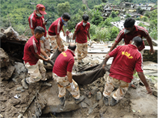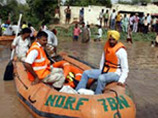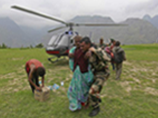India is a land of opportunities today. Many youth aim to join Indian Armed Forces (Military or Fauj) /Indian Coast Guard / Central Armed Police Forces (CAPFs) / Intelligence Bureau (IB)/ Central Bureau of Investigation (CBI)/ Narcotics Control Bureau (NCB)/ National Investigation Agency(NIA)/ Secretariat Security Force (SSF)/National Disaster Response Force (NDRF)/Railway Protection Force(RPF) /Railway Protection Special Force(RPSF)/ Delhi Police / State Police/ Defence Civilian Cadres as an officer or as a soldier / sailor / airman/ inspector /constable etc so as to be able to serve the nation/ state in uniform/non uniform environment. The source of inspiration for their joining any of the stated Services may be any. One of the major reasons is that these are more coveted jobs as are secure, stable and have good salary.
The aspirational youth of our country generally lack focus. They many times have not thought about their future, planning, skills, values, career influences, and interest. However, finally the aspirants have to make a decision depending on their preference, aptitude, educational qualifications and age, so that they select the best available option. Are they adequately armed with the information to make that decision? The online registration and submission of application has further added new dimension to the recruitment process. Is there anybody on whom they can depend for accurate and unbiased advice? Have they come across somebody who can counsel/mentor them anytime and assist them in meeting their dreams in this competitive world?
Therefore, when you approach us, we presume that you are motivated to join the Indian Armed Forces (Military or Fauj)/Indian Coast Guard/ Police Forces/ Defence Civilian Cadres. This is our experience that most of the youth/their parents are not aware of the complete opportunities and are misled by agents/touts for recruitment which is otherwise free.
We are aware that preparation for written examinations can be done by the aspirants themselves using guide books and taking help from teachers/coaching. However, the aspirants would need guidance/mentoring in other aspects to succeed in the tough competition and limited vacancies. This becomes more imperative for aspirants hailing from rural/ semi- urban areas and those with no previous experience. What we are offering is an informed counseling/advice/guidance through mentoring which will help aspirants in taking an informed decision and face competition at a small price. We feel one only fails, when one stops trying.
Our team will assist you in reaching your goals and realizing dream, provided you are prepared to put in hard work. There are no shortcuts to achieving success. In addition to participating in our programmes at our Centre, we offer online / distance guidance on telephone, without disrupting the continuity of studies or current job.
So what Mentor (your friend, guide and philosopher) does? Our Mentors serve as role models for youth who need help or who don't have a good support system available to them:-
- (a) Shape your career.
- (b) Give you guidance.
- (c) Help you achieve success.
Service Offerings:
- (a) Provide authentic information on queries raised about service conditions, life style and recruitment in Indian Armed Forces (Military/Fauj)/Police Forces/National Disaster Response Force/Defence Civilian Cadres.
- (b) Ascertain opportunities with context to an individual for recruitment in Indian Armed Forces (Militaryor Fauj)/Indian Coast Guard/Police Forces/National Disaster Response Force/ Defence Civilian Cadres based on personal parameters and eligibility conditions.
- (c) Advice and inspire the aspirant so as to enable him/her to take an informed decision and thus help in achieving the desired goal in an extremely competitive environment.
- (d) Guidance and counseling based on above analysis for the preferred opportunities in the desired Service(s).
- (e) Elucidate recruitment process and procedure for specific category and likely schedule of application.
- (f) Validation of physical measurements of aspirants.
- (g) Assist in registration and applying so that the application is not rejected due to trivial reasons.
- (h) Assist in preparation for the recruitment except teaching in academic subjects.
- (i) Periodic testing for physical fitness tests.
- (j) Monitor available opted opportunities and remind the aspirant for follow up so that no opportunity is lost.
- (k) Assist in redressal of grievances.
- (l) Organise talks/interactive sessions/seminars in schools/colleges with respect to recruitment in Services/Forces.
- (m) Ultimately be a Mentor to the aspirants by helping them with their problems in the process and achieving the dream.
Former RBI Governor Raghuram Rajan on Mentorship (February 18, 2015, Mumbai)
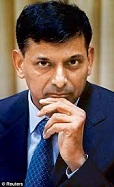
Rajan said that while it's important to cultivate entrepreneurs, there is also a need for sound mentors. Rajan spoke about an incident in his own life where he missed having a mentor.
As a student in IIT, he had gone for a Rhodes scholarship interview, "where everybody's propah". He hadn't given much thought to his clothes and went for the interview wearing white socks with a black suit. "I didn't realise wearing mismatched socks was inappropriate for this kind of interview. I thought, they would look past the socks but since I didn't make it through the interview, I guess they were stuck on the socks rather than my accomplishments," he said.
In another instance, he did find a mentor but of a different kind. While doing his PhD at MIT Sloan School of Management, Rajan was trying to find a topic for his thesis. "You keep reading for months on end and you have no idea what you are supposed to do," he said. "At that point if there is somebody to talk to about your problems, it's a big help, even if that person may not necessarily have a solution. I had a PhD guy like that, who would say, 'It's okay. You will figure it out'."
Rajan also pointed out that many youngsters had a social capital (network), which they were not even aware of. Not everyone has such a network. He advised the mentors to use their networks to open doors for the less privileged.
Source: DNA Mumbai
Opportunities
Now that you know our offerings and mentoring it is important that you identify the organizations, where you can apply.

The Indian Armed Forces (Military/Fauj) need no introduction for the youth.Having made the choice of Indian Armed Forces(Military/Fauj) as a career many young men and women enquire as to how they could join the Indian Armed Forces (Military/Fauj) as officers? When we talk of career in the Indian Armed Forces (Military/Fauj) one is reminded of NDA and CDSE. There are infact vast options in the Indian Armed Forces (Military/Fauj). Therefore, it is necesary to identify and explore the opportunities that are available. Recruitment of Commissioned Officers in the Indian Armed Forces (Military/Fauj) is mainly done through the Union Public Service Commission (UPSC). For technical branches, Women special entry scheme and service entries, recruitment is made directly through the respective Recruiting Directorates for the Army, the Navy and the Air Force. It must be noted that only unmarried women are eligible for commissioning in the Indian Armed Forces (Military/Fauj) except in case of war widows.

The Indian Army ranks among the best in the world. The primary task of the Army is to safeguard the territorial integrity of the nation against external threats. In addition, Army is called upon, as and when necessary, to assit civil administration during internal disturbances to maintain law & order, as well as to organize relief operations during natural calamities such as floods, earthquakes, cyclones etc.
Recruitment in the Army is controlled by Directorate General of Recruiting. It regulates recruitment through Regimental Centers, HQ Recruiting Zones and Army Recruiting Offices (AROs).Each ARO/HQ Recruiting Office/Independent Recruiting Office is responsible for recruitment in specified districts.
Only male candidates are eligible for recruitment in the Indian Army. Candidates below the age of 21, if married are not eligible. All soldiers are enrolled for a period of 17 to 20 yrs of color service and two to three years of reserve service or till they attain age of 40 to 46 yrs. Services can be extended on promotion to Non Commissioned Officers (NCOs)/ Junior Commissioned Officers (JCOs) ranks. A soldier is equivalent to Class III Govt employee. A JCO is equivalent to Class II Govt employee.
The recruitment is now on-line since Sep 2015,replacing the open rally system' (Walk-in-Selection).In this based on the schedules planned, on-line applications are invited on www.joinindianarmy.nic.in for all entries This entails on-line registration by the candidates,followed by their subsequently being called for recruitment.On-line registration and application open 60 to 45 days prior to the specific rally at designated AROs.
Recruiting is a continuous process throughout the year. The Rally schedule is issued by HQ Recruiting Zones and AROs.In addition the same is notified on the website. The enrolment schedule for special categories is advertised by the Army HQ in Employment News and important national/regional newspapers and their website. In addition, extensive recruiting publicity through other methods including electronic media is also done by Army HQ and other agencies.
Recruitment rallies are held at different places restricted to cover adjoining districts only, instead of entire state. Recruitment rallies are so organized that all areas are covered approximately twice a year for all trades.The rallies are conducted in the open in full view of the public.Candidates are required to make their own arrangements for stay and meals. Candidates eliminated at any stage are required to leave the rally site immediately.

TA is an organization of volunteers who receive military training for a few days in a year so that in case of an emergency they can be mobilized for the defence of the country. TA is not a profession, occupation or a source of employment. It is only meant for those people who are already in mainstay civilian professions, in fact, gainful employment or self-employment in a civil profession. It is a pre-requisite for joining the TA .Although it does not offer a regular career, the TA provides an ideal opportunity for the youth of the country to receive military training in their spare time. It is stressed that TA is purely a part time service basically for two months in a year.
The TA is part of the Regular Army. However, its role is to relieve the Regular Army from static duties and assist civil administration in dealing with natural calamities and maintenance of essential services. Its strength is about 40,000 first line troops (and 160,000 second line troops) comprising departmental TA units such as railway, IOC, ONGC, telecommunication and General Hospital, and the non-departmental TA units of infantry battalions and ecological battalions affiliated to various infantry regiments.
Commission is granted to only male and Ex-service officers who are medically fit and gainfully employed in Central Govt/State Govt/Semi Govt/Pvt firm/own business /self employed.

Recruitment in TA is carried out through rally system on specified dates at Army Recruiting Offices(for their jurisdictional area) and TA units(for their Zonal area).
Recruiting Zonal Divisions are as under:-
(a) Zone I: The states of Haryana, Himachal Pradesh, Jammu & Kashmir, Punjab and the Union Territory of Delhi and Chandigarh .
(b) Zone II: The states of Bihar , Madhya Pradesh, Orissa, Uttar Pradesh, Jharkhand, Chhatisgarh and Uttarakhand.
(c) Zone III: The states of Assam, Meghalaya, Manipur, Tripura, Nagaland, Sikkim, West Bengal, Mizoram, Arunachal Pradesh and UT of Andaman & Nicobar Island.
(d) Zone IV: The states of Andhra Pradesh, Gujarat, Kerela, Tamil Nadu, Rajasthan, Maharashtra, Karnataka, Goa and Union Territories of Dadra and Nagar Haveli, Daman & Diu, Lakshadweep and Pondicherry.

The Indian Navy is the 'three dimensional high technology service', which operates and maintains highly sophisticated ships, submarines and aircraft. The Navy has Seamen Branch, Engineering Branch, Electrical Branch, Aviation Branch, Submarine Arm, Logistics Cadre, Medical Branch and Communication Branch. Only unmarried male are eligible for enrolment in the Navy as sailors. Induction in the Navy is at 'all India basis'.
The recruitment below officer rank in the Navy is coordinated by the Directorate of Manpower Planning & Recruitment NHQ, New Delhi and conducted by the Naval Recruitment Establishments (NREs).

The Indian Air force is the fourth largest air force in the world. The IAF offers to the young men who are just out of schools and colleges and are looking for an early career, a good opportunity to join as Airman in its various trades. The IAF has three branches, viz ; Flying Branch, Technical Branch and Ground Duty Branch. Recruitment in the IAF below officer rank is conducted by the Central Airmen Selection Board. The IAF has Airmen Selection Centres at various places.
Airmen recruitment is advertised through the Employment News and all important National and Regional newspapers/ dailies. The advertisement also contains the format of the application. All recruitment is thus through the application system held at specified Airmen Selection Centres. Only unmarried male are eligible. Rally recruitment at selected places particularly in difficult area is also conducted.

The Indian Coast Guard is an Armed Force of the Union set up in 1977 for ensuring the security of the maritime zones of India with a view to the protection of maritime and other national interests in such zones and for matters connected therewith. The area of operations include 7615 km coastline and 2.2 million sq km of Exclusive Economic Zone (EEZ) comprising of 1200 islands, 11 major and 164 minor/intermediate, 500 Indian merchant ships sailing around the World and offshore oil assets.
The Indian Coast Guard offers career as Group 'A' Gazetted Officer except for Law which is as Deputy Commandant. Women are recruited in Coast Guard only as officers in General duty, General Duty (Pilot / Navigation) and General Duty (CPL Holders, Short Service entry) branches. The selection process for women is similar to that of male candidates. The women officers are posted in non sea going appointments. Unlike the other Armed Forces, the women officers in Coast Guard have the option to serve till superannuation, except for CPL holders and General Duty branch- Short service appointment. The recruitment of officers into the Coast Guard is carried out twice in a year to match with the dates of commencement of basic training at the Naval Academy.
The recruitment of Enrolled Personnel (EP) in Indian Coast Guard is conducted bi-annually. The advertisement is given in employment news all over India, both in Hindi as well as in English. Indian Coast Guard provides excellent opportunity for young dynamic unmarried male candidates with Diploma in Mechanical Electrical and Electronic Branches of engineering . The Yantriks are backbone of the Indian Coast Guard and responsible for operating and maintaining the machinery and equipment fitted on Indian Coast Guard ships and aircrafts. As 10+2, join as Navik (General Duty Branch) and specialize in various streams viz; Seaman, Communication, Mechanical Engineer, Electrical and Aviation. Candidates with 10th standard qualification can join in Domestic Branch as Cooks and Stewards.
The Police in India is one of the biggest employers of manpower. The sanctioned strength of Police Forces is 22 Lakh. There is about 25% deficiency in its manpower. The Central Government has established a number of police organisations known as the Central Police Organisations (CPOs). The CPOs, which functions under the control of the Ministry of Home Affairs, Government of India can be broadly divided into two groups. One consists of armed police organisations, also known as Central Armed Police Forces (CAPFs). The CAPFs comprise of the following outfits and NSG has total strength of 9.5 lakh with shortage of about 62000 personnel as on 01 Mar 2018:-

Assam Rifles (AR) originated as Cachar Levy in 1835.Presently has about 66000 personnel (46 battalions) .MHA has designated as a Para Military Force. The force works under operational control of the Army. It is also designated as the Border Guarding Force (BDF) for Indo -Myanmar border and lead intelligence agency. It conducts counter insurgency operations in the North-East and other areas where deemed necessary, under control of the Army.
It has inducted women in lower ranks in 2016.They are posted in various battalions of the force for search, frisking and interrogation of women when required, disperse female mob/crowd control and tackle agitations involving women agitators.

Border Security Force (BSF) was raised in 1965 and has sanctioned strength of 186 battalions. It now has 173 battalions, including a Women Battalion (about 252000 personnel). BSF has an air wing, marine wing, artillery regiments and commando units.Its primary role is to guard the land borders of the country except mountains. It has been substantially deployed on Indo-Pak and Indo-Bangladesh borders and also in anti- insurgency operations.There are plans to raise another six battalions.

Central Industrial Security Force (CISF) ) created in 1969 is a premier multi-skilled security agency of the country with strength of 148371.It is mandated to provide security to major critical infrastructure installations of the country in diverse areas like airports, PSU, Govt establishments and corporate. It has all India presence with Airport Sector, five regional sectors, one training sector, 12 reserve battalions and two NDRF battalions. It also provides technical consultancy for security and related matters. Over the years, it has provided Consultancy Services to more than 140 different organizations, including those in the private sector. CISF is the only CAPF having a full-fledged Fire Service Wing with a strength of 7099 fire professionals, which provides coverage to 100 different installations all over the country.

Central Reserve Police Force (CRPF) is a situation responsive force with 242 battalions, (including 204 executive battalions, 6 Mahila battalions, 15 Rapid Action Force battalions, 10 battalion anti riot force trained to respond to sectarian violence and the Commando Battalion for Resolute Action(COBRA),an anti- Naxalite Force, 5 Signal battalions and 1 Special Duty Group, 1 Parliament Duty Group is the oldest CAPF. It has about 303535 personnel.The primary role of the CRPF is to assist the civil administration of the State or UT in the task of restoration of peace and maintenance of law and order(crowd control/riot control).The force is engaged in major anti- insurgency/terrorism/militancy/ Left Wing Extremism related operations in the country.The role of CRPF in the elections is very significant and vital. It also guards vital Central Govt installations and VIPs.

Indo Tibetan Border Police (ITBP) was raised in 1962.It has 60 battalions with strength of about 90000 personnel.It has about 1500 women. Most of the personnel are trained mountaineers and skiers. It is a specialized mountain force deployed on border guarding duties from Karakoram Pass in Ladakh to Jachep La in Arunachal Pradesh covering 3488 km of Indo-China Border and manning Border Outposts at altitudes ranging from 9000 ft to 18700 ft. It also assists in disaster management in the Himalayan Region.There are plans to raise another nine battalions.

Sashastra Sena Bal (SSB) started as Special Services Bureau (SSB) in 1963 and is now a BGF.Its sanctioned strength is 98,965.SSB profile has six Frontiers, 18 sectors, 71 battalions including two converted into NDRF and two under raising. The SSB is mandated to guard Indo-Nepal and Indo-Bhutan Borders covering a stretch of more than 2450 km. It is also entrusted with the responsibility to counter Left Wing Extremism in the states of Bihar, Chattisgarh and Jharkhand and for Internal Security duties in J & K.
The recruitment is done centrally by conducting a single combined examination for all CAPFs & AR through Staff Selection Commission (SSC). Recruitment of constable in CAPFs is conducted as per scheme issued by the MOH, in which 60 percent of vacancies are being allotted amongst all States/Union Territories on the basis of population ratio.20 percent vacancies are allotted to border districts falling within the area of responsibility of Border Guarding Forces (BGFs) and 20 percent vacancies in Border Guarding Forces are allotted to the militancy affected area (J-K, North Eastern States and Naxal affected areas) as notified by the Government from time to time.
In forces other than BGFs, 40 percent vacancies are allotted to militancy-affected areas (i.e. J-K, North Eastern States and Naxal affected areas).
Recruitment to the state police is done at three levels - Constable, Sub-Inspector/Asst Sub Inspector and Deputy Superintendent of Police. In addition, there is recruitment to the IPS at the level of Assistant Superintendent of Police.
In these forces, the higher positions are usually filled by promotions or on deputation basis from Police or sometimes the Army. However, entry to CAPFs as Assistant Commandants (Group A) is through Central Police Forces (Assistant Commandants) Examination conducted by UPSC. Recruitment to the post of Sub Inspectors of Police in CAPFs is through SSC.
Reserve Battalions (State Armed Police Forces): The Indian Reserve Battalion (IRB) is an elite unit sanctioned to States and UTs which are trained to deal with specific situation. The Government of India introduced the scheme of IRBs in 1971. The sanctioned strength so far is 153 IR Battalions to various States, out of which 144 IR Battalions have been raised and one IR Battalion in Jharkhand has been converted into Specialized IRB Battalion (SIRB) having two engineering companies and five security companies.
It is one type of Armed Police Force that every state has its own. It is also known as State Military Force/ Special Armed Police Force/ Pradeshik Armed Constabulary, etc. Although the titles are different, their organisation, weapons, equipment and tasks are nearly the same. The Government of India now refers to these forces nationwide as the State Armed Police Forces. The State Armed Police act as a mobile armed reserve activated only on the orders from the Additional Commissioner of Police or above. They are not usually in contact with the public except during public events, civil unrest, and natural disasters. They maintain key guard posts and participate in antiterrorist operations. Depending on the type of assignment, they may be or may not be carrying firearms. The main tasks of this force are raid on hostile hideouts, cordoning/ combing operations, counter ambush operations, VIP/VVIP Security, reinforcing a patrol & training of State Police.
In January 2016 has announced raising of 17 more battalions for J&K and Naxal affected states or Left Wing Extremism (LWE){ 5 in J & K, 4 in Chhattisgarh , 2 in Maharashtra ,3 in Jharkhand and 3 in Odisha . After these raisings there will be 161 battalions. Each battalion will have strength of 1000 including Class IV posts. The major thrust in raising these 17 battalions is as follows:-
(a) Local youths will be recruited with relaxed age and educational criteria, if required.
(b) In respect of J&K, 60% of the vacancies will be filled from the border districts of J&K for the posts of constables and class IV.
(c) For LWE states, 75% of the vacancies of constables will be filled up from 27 core districts under Security Related Expenditure (SRE) Scheme.
(d) One of the new India Reserve Battalion will be named after Maharana Pratap.
The other group includes organizations like the Bureau of Police Research and Development, Central Bureau of Investigation (CBI), Directorate of Coordination of Police Wireless (DCPW), Intelligence Bureau (IB), National Crime Records Bureau (NCRB), National Institute of Criminology and Forensic Science (NICFS), and the National Police Academy (NPA).

Intelligence Bureau (IB) is the Intelligence agency focused on internal security under the Ministry of Home Affairs. It also executes counter-intelligence and counter-terrorism tasks. The IB comprises of employees from law enforcement agencies, mostly from the IPS and the military. In addition, to domestic intelligence responsibilities, the IB is particularly tasked with intelligence collection in border areas.
The collection mechanisms of the IB varies depending on the region, but the IB operates both at the state level and the national level. The bulk of the intelligence collection is carried out by `Grade II' employees of the IB, i.e. in increasing order of seniority; the Security Assistants (Constable), the Junior Intelligence Officers (Head Constable), the Asst (Central) Intelligence Officer (Sub-Inspector), Dy Central Intelligence Officers (Inspector), and Joint Central Intelligence Officers (SPs). The `Class I'(gazette) officers carry out coordination and higher-level management of the IB. At the state level all IB officers are part of the State Special Bureau report to a Central Intelligence Officer.
Security Assistants (Constable) are directly recruited. Grade II officers are in part direct recruitment and officers deputed from state police forces, but Class I officers are mostly deputed from state services.

Central Bureau of Investigation (CBI) functions under Department of Personnel, Ministry of Personnel, Pension & Public Grievances; Govt of India. It is the premier investigating police agency in India. It is an elite force playing a major role in preservation of values in public life and in ensuring the health of the national economy. It is also the nodal police agency in India which coordinates investigation on behalf of the Interpol Member countries. The CBI has to investigate major crimes in the country having interstate and international ramifications. It is also involved in collection of criminal intelligence pertaining to three of its main areas of operation, viz, Anti-Corruption, Economic Crimes and Special crimes.CBI investigations have a major impact on the political and economic life of the nation. The CBI is headed by a Director. The other police ranks in CBI are Special Director/Addl Director, Joint Director, DIG of Police, Inspector, Sub-Inspector, Assistant Sub-Inspector, Head Constable and Constable. Recruitment is direct in Dy SP(10%),Sub Inspector(50%) and Constable(40%).

Narcotics Control Bureau(NCB) co-ordinates actions by various offices, State Governments and other authorities under the NDPS Act, Customs Act, Drugs and Cosmetics Act and any other law for the time being in force in connection with the enforcement provisions of the NDPS Act, 1985.It also implements the obligation with respect to counter measures against illicit traffic under the various international conventions and protocols that are in force at present or which may be ratified or acceded to, by India in future.
The NCB is the apex coordinating agency. It also functions as an enforcement agency through its zones and sub-zones. The zones and sub-zones collect and analyse data related to seizures of narcotic drugs and psychotropic substance, study trends, modus operandi, collect and disseminate intelligence and work in close cooperation with the Customs, State Police and other law enforcement agencies.
Zones are located at Ahmedabad, Bengaluru, Chandigarh, Chennai, Delhi, Guwahati, Indore, Jammu, Jodhpur, Kolkata, Lucknow, Mumbai and Patna. Sub-zones are located at Ajmer, Amritsar, Bhubaneshwar, Dehradun, Goa, Hyderabad, Imphal, Mandsaur, Madurai, Mandi, Raipur, Ranchi and Thiruvananthpuram.
The organization is headed by the DG and has Assistant Directors , Dy/Zonal Directors. Superintendents and Havaldars are by promotion. Direct recruitment to the minimum extant mentioned below exists in Sepoy, UDC, Surveillance Assistants and Intelligence Officers. Recruitment is direct in Sepoy (8%), UDC (40%),Surveillance Assistant (60%) and Intelligence Officer (60%).

National Investigation Agency (NIA) is a central agency established in December 2008 by the Government of India to combat terror in India. It acts as the Central Counter Terrorism Law Enforcement Agency. The agency is empowered to deal with terror related crimes across states without special permission from the states. It also has powers to investigate terror crimes relating to Indians and Indian interests abroad. NIA is further empowered to probe offences relating to challenge to the country's sovereignty and integrity, bomb blasts, hijacking of aircraft and ships, attacks on nuclear installations, smuggling in high-quality counterfeit Indian currency, human trafficking, manufacture or sale of prohibited arms, cyber-terrorism and offences related to explosive substances.
It is headquartered in New Delhi. The NIA has branches in Hyderabad, Guwahati, Kochi, Lucknow, Mumbai, Kolkata, Raipur and Jammu with respective jurisdictional areas. The ground staff of the agency in the national capital could be drawn from existing central staff and security organizations while in the states, permanent deputation from the state police could be taken.
Officers of the NIA are drawn from the IPS and IRS. Other posts, where direct recruitment is done are as follows:-
- Group A (Gazetted & Non Ministerial).Network Administrator- by deputation /absorption failing which by direct recruitment.
- Group A & B(Gazetted/Non Gazetted & Non Ministerial).Finger Print Expert, Technical Forensic Psychologist, Biology Expert, Explosive Expert, Deputy Legal Advisor, Senior Public Prosecutor, Public Prosecutor, Senior System Analyst, Accountant, Photographer posts are filled by deputation (including short term contract) failing which by direct recruitment.
- Group B (Non Gazetted & Non Ministerial). Sub Inspector-50% by direct recruitment. Assistant Programmer- by direct recruitment.
- Group C (Non Gazetted & Non Ministerial). Stenographer Grade D, Constable and LDC-40%, 80% and 85% by direct recruitment respectively.

Secretariat Security Force (SSF) created in 1940, is a part of Secretariat Security Organisation (SSO), the nodal agency for the security of Government Buildings in Delhi under the security cover of the Ministry of Home affairs. SSO comprises of SSF and Central Reception Organisation (Reception Wing). They are deployed for controlling the access (guarding) of the buildings (49) of the Central Government in Delhi. They perform duties under the command and control of CISF. The categories include; Constable, Head Constable/Head Constable Driver, Sub-Inspector, Inspector and Subedar Major.

Delhi Police is the primary law enforcement agency of the National Capital of India.Their role is to maintain law and order and providing assistance to the people when necessary and in times of emergency, disaster and crisis. The following career opportunities exist at various levels. Some of the important opportunities are: Constable, Ministerial Cadre, Sub-Inspector, and Assistant Commissioner of Police.
Recruitment of Constables (Male & Female) is done by a Recruitment Board appointed by the Commissioner of Police. Candidates from all parts of country are eligible for recruitment. The vacancies are notified in the concerned Employment Exchange of Delhi and Central Employment Exchange on all India basis. Besides, vacancies are also advertised in News Papers/Rozgar Samachar inviting application for open competition. The applicants are required to appear for the Physical Examination, Written Test.
Direct Recruitment to the Ministerial Cadre is made only in the rank of Head Constable (Ministerial) and of Stenographers in the rank of Assistant Sub-Inspector. Competitive examination for this purpose is held for which candidates from open competition as well as from the department are eligible. Vacancies are also advertised in News Papers/Rozgar Samachars.
For Sub-Inspectors, Delhi Police places advertisements from time to time.For Assistant Commissioner of Police the entire process is conducted and carried out by the UPSC and candidates are selected through the Civil Services Examination.

Rajasthan Police Service was formed in January 1951 and has a strength of 80000 personnel. There are three entry levels: Constable, Sub Inspector and as Deputy Superintendent of Police. However, in Telecommunications Cadre, Direct Recruitment is also done for the posts of Inspector and Assistant Sub Inspector. In State Special Branch, recruitment for Assistant Sub Inspector is done through local board/ Rajasthan Public Service Commission (RPSC).
Each district has a separate recruitment for Constables. Police Sub Inspector and Deputy Superintendent of Police, are recruited by the RPSC.

The Railway Protection Force (RPF) an Armed Force of the Union functions under Railway Ministry. It has been constituted under the RPF Act, 1957 (as amended in the year 1985 and 2003) for better protection and security of railway property, passenger area, passengers and matters connected therewith.
RPF is responsible for protection of Railway property, provide smooth train operations, protection and safeguard to the passenger and luggage, thus ensuring better passenger facilitation. Their role also includes access control to stations, general security on the platforms in passenger area and circulation area.RPF is empowered to:-
- Deal with cases of theft, dishonest misappropriation and unlawful possession of railway property.
- Deal with offences related to roof traveling, touting, unauthorized entry into coaches earmarked for ladies, unauthorized vending, trespass etc.
- Take cognizance of and launch prosecution against offenders who commit offences as specified in Railways Act against the railway passengers.
The sanctioned strength of RPF is 76,563. The RPF is headed by DG who is usually an IPS officer. The administrative set-up of the RPF is as per the administrative set-up of the Indian Railways. RPF has a special force called Railway Protection Special Force (RPSF) which is organised on battalion pattern. At present there are 15 battalions of RPSF (including one Mahila Battalion).The RPSF has been assisting the RPF in difficult terrains as a striking force against extremists and naxalites.
Separate specialized intelligence units in the name of Special Intelligence Branch (SIB) and Crime Intelligence Branch (CIB) also function from Divisional as well as Zonal Railways for collection of special and criminal intelligence. Besides above, Stores, Dog Squad and Band are other constituent units of the Force at Divisional and Zonal Railways.
The RPF officers {Gazetted (Group A)} are recruited through the Civil Services Examination conducted by the UPSC. The RPF has a similar rank structure as the IPS. Non-gazetted ranks are the same as those in the State Police Services. The job profile differs for each position. Recruitment of these is controlled by Security Directorate and conducted by constituted Central Recruitment Committee (CRC) for the positions of Constables (Exe/Ancillary/Band/Driver Grade III and Sub Inspectors (Exe/Band).
National Disaster Response Force (NDRF)

NDRF was raised for the purpose of specialized response to natural and man-made disasters/threatening disaster situation in 2006 under MOH. The NDRF functions under the general superintendence, direction and control of the National Disaster Management Authority (NDMA) and under command and supervision of Director General NDRF. As on date, NDRF has a strength of 10 battalions, three each from the BSF and CRPF and two each from CISF and ITBP. All the ten battalions are equipped and trained to respond to natural as well as man-made disasters. Four battalions of them are also trained and equipped for response during chemical, biological, radiological and nuclear (CBRN) emergencies.
Each NDRF Battalion consists of 1149 personnel. Additional two battalions are approved for the conversion/up-gradation from SSB. At present, a battalion has 18 self-contained specialist search and rescue teams of 45 personnel each including engineers, technicians, electricians, dog squads and medical/paramedics.
These NDRF battalions are located at different locations in the country based on the vulnerability profile, to cut down the response time for their deployment. During the preparedness period/in a threatening disaster situation, proactive deployment of these forces is carried out by the NDMA in consultation with state authorities.
NDRF with its swift and highly skilled rescue operations has emerged as most visible and vibrant force of the NDMA. NDRF is being trained, re-trained and equipped as a specialist force for level three disasters NDRF personnel are invariably trained in courses like Flood Rescue, Collapsed Structure Search & Rescue, Rope Rescue, Nuclear, Biological and Chemical Emergencies, Dignified Disposal of dead Bodies etc. NDRF personnel are trained in prestigious institutes in India and abroad.
Defence Civilian Cadres include all defence civilians whether gazetted or non- gazetted permanent or temporary, industrial or non-industrial, paid either from Civil Estimates or Defence Services Estimates, and borne on the roster of the Ministry of Defence, Armed Forces Headquarters, Organisations of the Director General Ordnance Factories, Inter Services Organisations and other formations or subordinate offices of the Ministry of Defence . Defence Civilians also include the Govt servants of the following establishments:-
- (a) Defence Accounts Department (DAD)
- (b) General Reserve Engineer Force (GREF).
- (c) Indian Coast Guard.
- (d) NCC whole time officers granted permanent commission and Military Nursing Service (MNS-Local).
They are categorized in four groups for the purpose of compensation in regard to their work viz:-
- (a) Group 'A' & 'B' Gazetted Officers
- (b) Group 'B' & 'C' Non Gazetted Officers.
- (c) Group 'C' & 'D' Non Industrial Employees.
- (d) Group 'C' & 'D' Industrial Employees.
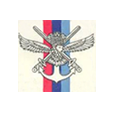 Armed Forces
Armed Forces BRO
BRO MES
MES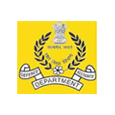 DAD
DAD NCC
NCC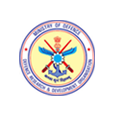 DRDO
DRDO
Department of Personnel and Training has compiled frequently asked questions on Central Services Recruitment Rules. These help aspirants for taking informed decisions in recruitment procedures. Recruitment rules for regulating methods of recruitment to various civilian posts are framed and reviewed on a periodical basis for all civilian services including MES.
Do you have any basic questions on recruitment which are immediately bothering you? If yes, you can put in the "Enquiry/Questions". We will reply you through email.






